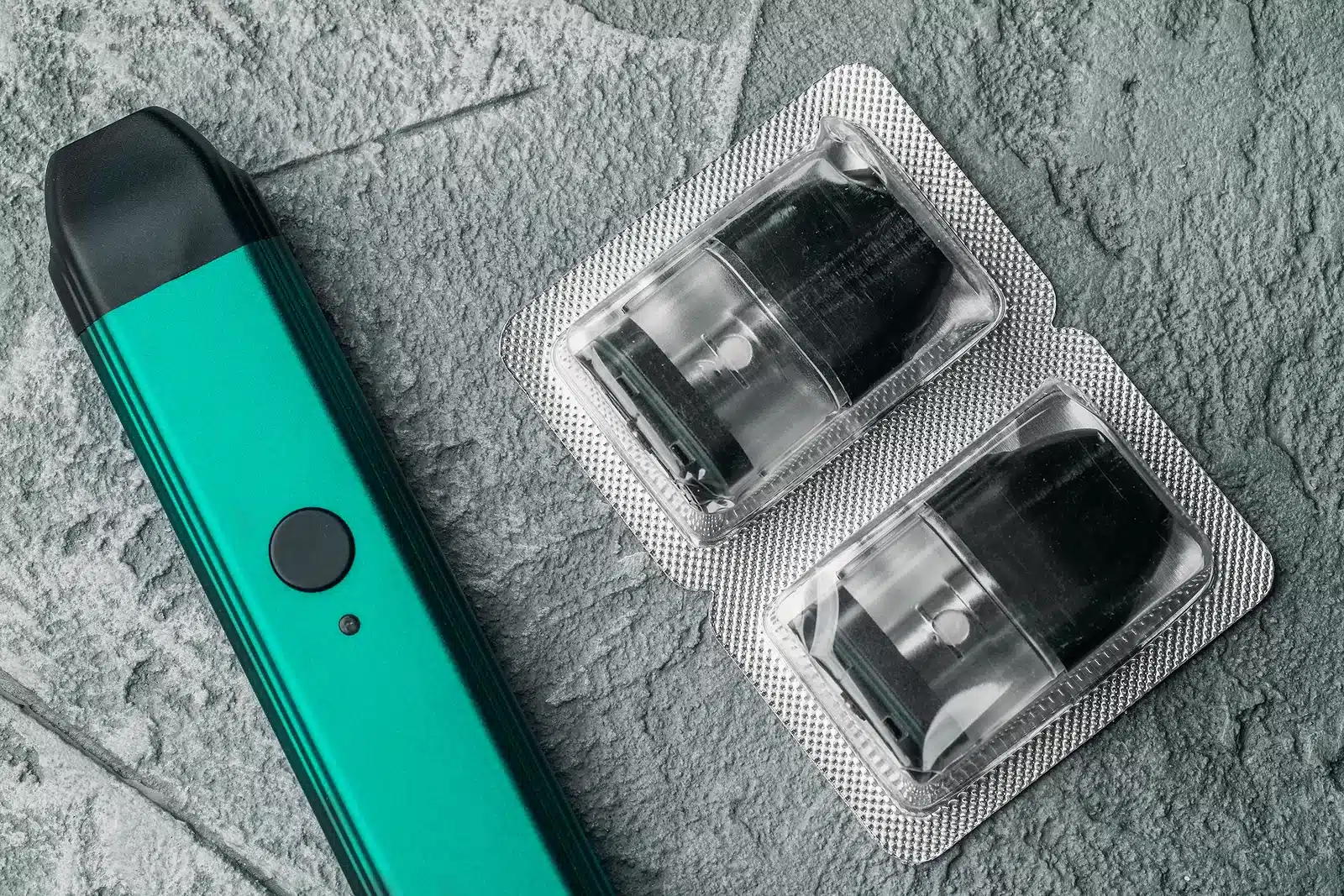One of the most fascinating parts of the vaping world at present is the sheer variety of options when it comes to shape, size, flavour, intensity, nicotine concentration and every other aspect of a vape that could possibly be changed.
The modern history of vaping is relatively new and has seen considerable changes in the two decades since the patent that established the principle of the e-cigarette as we know it now.
However, one of the biggest changes is one that changed the taste, the intensity and the very shape of vape hardware, with implications still being felt today for the former smokers who made the switch in growing numbers.
The Two Types Of Vape Juice
To understand the change, it is important to understand the difference between the two main types of nicotine in vape juice, both of which are widely available in a lot of flavours but provide a fundamentally different type of hit.
When vapes first hit the market, the only type of vape juice available was freebase nicotine, which at the time was the primary form of nicotine used in both cigarettes as well as nicotine replacement therapy products such as patches and gum.
Freebase nicotine alters nicotine from its salt state into its base form using an alkaline (typically ammonia), which helps to increase the potency without increasing the dosage.
In cigarettes this is effective, but for vaping it can create a harsh aftertaste in the back of the throat when using juices with high amounts of nicotine due to the higher pH levels creating what people characterise as a throat burn.
This meant that heavy smokers switching to vaping either had to get used to the unusual taste and feel, use especially strong flavours to try and offset it or lower the nicotine dose and draw more puffs from a vape.
Some ex-smokers have compared high-nicotine vaping more to smoking a cigar, which contains a lot of nicotine but because cigar smoke is not inhaled due to its sheer harshness, less of it is absorbed than one would expect and it takes longer to get that type of hit.
It is obviously something a lot of vapers can and did get used to, but people were keen to find an alternative that could provide that stronger, more immediate hit to help smokers battle cravings better.
Whilst nicotine is naturally found in salt form, nicotine salts are made by taking freebase nicotine and mixing it with a weak acid (typically benzoic acid).
This provides the benefits of freebase nicotine but reduces the pH to closer to a neutral level, meaning that people can vape higher nicotine levels without having the same irritated feel in the back of their throat, whilst speeding up how quickly nicotine is delivered after a puff.
This makes an e-cigarette provide the same type of almost immediate hit as a regular cigarette and makes them much more appealing to ex-smokers who want a similar feeling but without either the nasty flavour or horrible side effects that come from smoking.
It used to be the case that nicotine salts were slightly more expensive than standard e-liquids, but both can now be found for essentially the same price because a smaller concentration of vape salt is needed to provide the same level of nicotine as freebase liquids.
Ultimately for end users, it is a matter of personal preference. However, nicotine salts would through providing a smoother experience for people willing to make the switch change the shape of the vaping world forever once they started to be used.
The Dawn Of The Future
According to an email sent to The Verge in 2018, Vuse might have been the first major e-cigarette brand to incorporate nicotine salts, having done so as early as 2012. Given that Vuse was only launched in 2013, this presumably includes preliminary product research and development as well.
Vuse, owned by R.J. Reynolds, itself owned by British American Tobacco (BAT), was one of the first steps a major tobacco company took into the vaping world, and in 2013 provided a relatively high nicotine concentration compared to similar cigalikes at the time.
This lends credence to the claim that they used nicotine salts at some level in order to make the experience feel more like using a cigarette and improve the delivery.
It worked very well for Vuse; from 2015 until 2018 the brand had the biggest share amongst e-cigarette brands in the United States, and would only be toppled by the brand that brought nicotine salts into the vaping mainstream, and actually has the patent to prove it.
Because you needed far less nicotine salt to deliver a hit, Juul’s patent allowed it to create what became known as the pod vape, reduced the size of vapes without limiting capacity and changed the shape of vapes away from box mods and cigalikes towards pen drive-sized bar designs.
This was enough for Altria (the company that was formerly Philip Morris) to acquire a 35 per cent stake in the company, but beyond that, it became the catalyst to help smokers get a product that suited them better.
For some, that was the pod mod design that Juul used, but for others, it was e-liquids produced with nicotine salt rather than freebase, and for others still, it was disposable vapes, as they had the lowest overall cost for someone who simply wanted to try a vape out.
Exactly what the future will hold for vaping is unclear, although the “swap to stop” scheme suggests that e-cigarettes will be a major part of government policies to make smoking extinct in the UK once and for all.
Before nicotine salts were widely used, vaping was a growing niche as much about blowing gigantic clouds as they were about providing an effective alternative to smoking given the throat burn that could be caused at higher concentrations.
After nicotine salts, vapes became available that were easier to use, more enjoyable, lasted longer, were more affordable and were far less harmful than cigarettes, and more people adopted them as a replacement.


